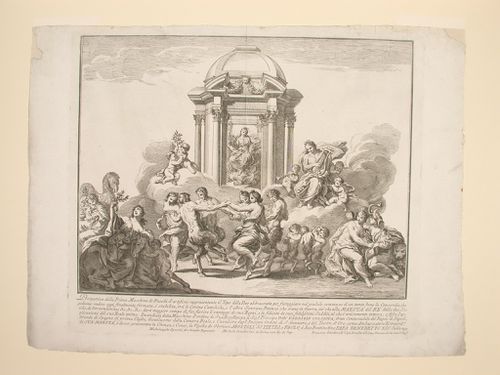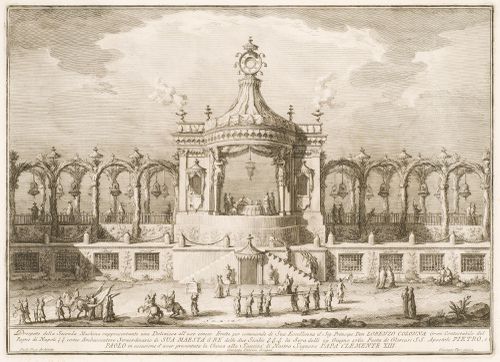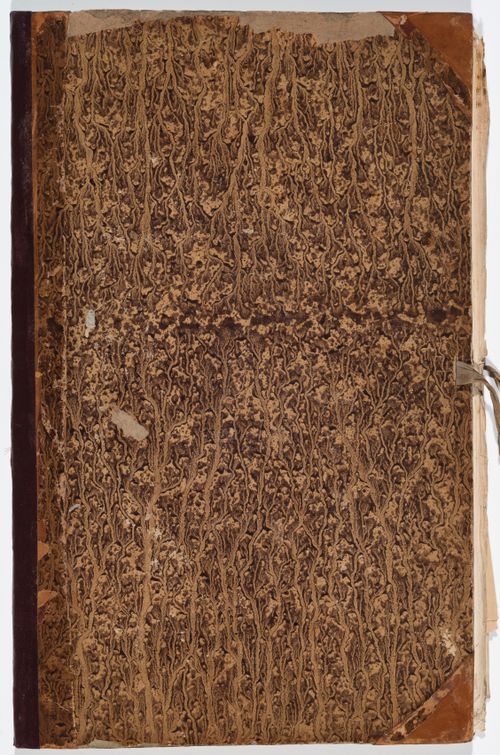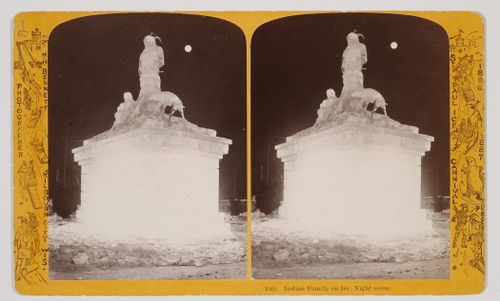archives
Niveau de description archivistique:
Fonds
Fonds Álvaro Siza
AP178
Description:
The Álvaro Siza fonds documents the architectural work of Portuguese architect Álvaro Siza. Records in this fonds document Siza’s projects from 1958-2012, including built and unbuilt designs. A collaborative project was established between the Canadian Centre for Architecture (CCA), Fundação de Serralves, and Fundação Calouste Gulbenkian to allow for international research and access to the archive. The archive is shared by the three institutions with each institution holding different projects while collaborating on the descriptive work and increasing the visibility of the archive. The holdings at both the Fundação de Serralves and Fundação Calouste Gulbenkian focus on Siza’s Portuguese projects, while the portion of the archive held by the CCA mainly includes Siza’s projects abroad. All three institutions are committed to describing the archive and making it accessible for scholarly research. The processing of the Siza archive held by the CCA has been divided into four phases to allow for access to parts of the archive while still in process. For the first, second, and third phases, the processing archivist has described the projects from the fifties, sixties, and seventies, as well as projects for the IBA competition in Berlin, urban renewal projects in The Hague from the eighties, urban plans, museums, and individual houses between 1980 and 2000. The processing archivist has also described approximately 203 sketchbooks. Many of these sketchbooks include sketches related to architectural projects which were processed. The complete list of projects processed by the CCA to date can be found in series AP178.S1. The bulk of the Álvaro Siza fonds is arranged in Series AP178.S1, which contains documentation for over 200 of Siza’s architectural projects. Records in this archive are predominantly from 1970 to 2000. Series AP178.S1 mainly contains conceptual, design development, presentation, and working drawings. Also included are photographic materials, models, born digital records, and textual documentation, which include correspondence, project proposals, and notes. The architect’s creative process is captured in 282 sketchbooks arranged in Series AP178.S2. In all there are approximately 60 000 drawings, 3000 folders of textual documentation, 9.46 linear meters of photographs and negatives, 6,545 slides, 250 CD-ROMS, 101 floppy disks, and 371 models that document the architectural activities of Siza and his office. Among the drawings are sketches by Siza on various items, such as napkins, receipts, envelopes, or on the back of working drawings. The fonds contains several types of architectural projects including residential buildings, museums, universities, urban plans, offices, and city restorations. Of particular significance are the sketchbooks, comprised of sketches for architectural projects, Siza’s travels, people, and animals as well as notes and draft letters. The sketchbooks are organized in chronological order, starting in the late 1970’s to the beginning of the 2000’s. Locations, notes, and dates have also been identified on the front of each sketchbook along with the sketchbook number. The sketchbooks provide a unique perspective of Siza’s use of drawing as part of his work process.
1958-2002
Fonds Álvaro Siza
Actions:
AP178
Description:
The Álvaro Siza fonds documents the architectural work of Portuguese architect Álvaro Siza. Records in this fonds document Siza’s projects from 1958-2012, including built and unbuilt designs. A collaborative project was established between the Canadian Centre for Architecture (CCA), Fundação de Serralves, and Fundação Calouste Gulbenkian to allow for international research and access to the archive. The archive is shared by the three institutions with each institution holding different projects while collaborating on the descriptive work and increasing the visibility of the archive. The holdings at both the Fundação de Serralves and Fundação Calouste Gulbenkian focus on Siza’s Portuguese projects, while the portion of the archive held by the CCA mainly includes Siza’s projects abroad. All three institutions are committed to describing the archive and making it accessible for scholarly research. The processing of the Siza archive held by the CCA has been divided into four phases to allow for access to parts of the archive while still in process. For the first, second, and third phases, the processing archivist has described the projects from the fifties, sixties, and seventies, as well as projects for the IBA competition in Berlin, urban renewal projects in The Hague from the eighties, urban plans, museums, and individual houses between 1980 and 2000. The processing archivist has also described approximately 203 sketchbooks. Many of these sketchbooks include sketches related to architectural projects which were processed. The complete list of projects processed by the CCA to date can be found in series AP178.S1. The bulk of the Álvaro Siza fonds is arranged in Series AP178.S1, which contains documentation for over 200 of Siza’s architectural projects. Records in this archive are predominantly from 1970 to 2000. Series AP178.S1 mainly contains conceptual, design development, presentation, and working drawings. Also included are photographic materials, models, born digital records, and textual documentation, which include correspondence, project proposals, and notes. The architect’s creative process is captured in 282 sketchbooks arranged in Series AP178.S2. In all there are approximately 60 000 drawings, 3000 folders of textual documentation, 9.46 linear meters of photographs and negatives, 6,545 slides, 250 CD-ROMS, 101 floppy disks, and 371 models that document the architectural activities of Siza and his office. Among the drawings are sketches by Siza on various items, such as napkins, receipts, envelopes, or on the back of working drawings. The fonds contains several types of architectural projects including residential buildings, museums, universities, urban plans, offices, and city restorations. Of particular significance are the sketchbooks, comprised of sketches for architectural projects, Siza’s travels, people, and animals as well as notes and draft letters. The sketchbooks are organized in chronological order, starting in the late 1970’s to the beginning of the 2000’s. Locations, notes, and dates have also been identified on the front of each sketchbook along with the sketchbook number. The sketchbooks provide a unique perspective of Siza’s use of drawing as part of his work process.
archives
Niveau de description archivistique:
Fonds
1958-2002
DR1988:0437:015
Description:
- This etching for a fireworks construction or macchina in the form of a small single-storey tempietto is dedicated to peace. The tempietto is raised up on clouds and surrounded by various mythological figures including satyrs, and other animals such as a camel and a horse. The four women at the lower left and lower right might represent the four continents.
architecture temporaire
printed 1749
Etching of Specchi's design for the "prima macchina" of 1749
Actions:
DR1988:0437:015
Description:
- This etching for a fireworks construction or macchina in the form of a small single-storey tempietto is dedicated to peace. The tempietto is raised up on clouds and surrounded by various mythological figures including satyrs, and other animals such as a camel and a horse. The four women at the lower left and lower right might represent the four continents.
architecture temporaire
dessins
AP178.S2.1991.009
Description:
This sketchbook includes sketches for the Vitra International in Germany, Complexo de Habitação e Escritórios na Avenida da Boavista, urban and circulation study for Praça de Espanha and reconstruction of Chiado in Portugal, as well as residential settlement in Schilderswijk and Ceramic Terrain housing and offices in Netherlands. It also includes notes, sketches of people, animals, churches, and kitchen accessories.
October 1991
Sketchbook 322: Boavista - Ceramica- Candeeiro - Vitra - Salemi - Lusitania - Holanda- V. do Conde
Actions:
AP178.S2.1991.009
Description:
This sketchbook includes sketches for the Vitra International in Germany, Complexo de Habitação e Escritórios na Avenida da Boavista, urban and circulation study for Praça de Espanha and reconstruction of Chiado in Portugal, as well as residential settlement in Schilderswijk and Ceramic Terrain housing and offices in Netherlands. It also includes notes, sketches of people, animals, churches, and kitchen accessories.
dessins
October 1991
documents textuels
ARCH255531
Description:
19 art magazines and gallery brochures - General Idea, Inuit Art and Crafts, Jerry Pethick, Sculpture in the Parks of the Nation's Capital, The Idea of North, Ippilie Oshoweetok, Uumajut: Animal Imagery in Inuit Art, fiction from The Art Gallery of Ontario, Arctic Vision: Art of the Canadian Inuit, About Arts and Crafts, Art Bank Catalogue, Azure, Canadian Art, Culture's Nature, En Route.
1981-1988
Art magazines and gallery brochures
Actions:
ARCH255531
Description:
19 art magazines and gallery brochures - General Idea, Inuit Art and Crafts, Jerry Pethick, Sculpture in the Parks of the Nation's Capital, The Idea of North, Ippilie Oshoweetok, Uumajut: Animal Imagery in Inuit Art, fiction from The Art Gallery of Ontario, Arctic Vision: Art of the Canadian Inuit, About Arts and Crafts, Art Bank Catalogue, Azure, Canadian Art, Culture's Nature, En Route.
documents textuels
1981-1988
Projet
AP206.S1.1985.PR10
Description:
This project series documents the Indira Gandhi National Open University (IGNOU) in India, likely around 1985-2000. The project was probably for the main campus, located in New Delhi. The project proposed a complete campus made up of round structures and roadways. The roads and buildings were proposed as one and the same, as both the roads and parking would make up the roofs of the buildings. This, it was said, would maximize the campus's space and separate cars from pedestrians. The project also proposed the design of energy efficient and sustainable infrastructure and processes for the campus. The drawings highlight the creation of waste management facilities, a biogas plant, sewage systems, an animal husbandry block, vegetable farming, efficient furniture and windmills mounted on the laboratories. The project is recorded through drawings, which are mostly reprographic copies, textual records and slides, likely dating from around 1985-2000. The drawings consist of a campus diagram, area survey plans, elevations, a section and details, while the textual records consist of a project proposal report. The slides show presentation plans and the project model.
circa 1985-2000
Indira Gandhi National Open University, New Delhi (circa 1985-2000)
Actions:
AP206.S1.1985.PR10
Description:
This project series documents the Indira Gandhi National Open University (IGNOU) in India, likely around 1985-2000. The project was probably for the main campus, located in New Delhi. The project proposed a complete campus made up of round structures and roadways. The roads and buildings were proposed as one and the same, as both the roads and parking would make up the roofs of the buildings. This, it was said, would maximize the campus's space and separate cars from pedestrians. The project also proposed the design of energy efficient and sustainable infrastructure and processes for the campus. The drawings highlight the creation of waste management facilities, a biogas plant, sewage systems, an animal husbandry block, vegetable farming, efficient furniture and windmills mounted on the laboratories. The project is recorded through drawings, which are mostly reprographic copies, textual records and slides, likely dating from around 1985-2000. The drawings consist of a campus diagram, area survey plans, elevations, a section and details, while the textual records consist of a project proposal report. The slides show presentation plans and the project model.
Project
circa 1985-2000
DR1988:0437:029
Description:
- This etching of a fireworks construction or macchina is in the form of a pavilion with unroofed arcades extending to either side. The pavilion is roofed by a tent-like structure and is open at front and back to show a group of people gathered around a large table. The two arcades are made of palm trees: the tree trunks are the columns and their leaves form the arches. The substructure includes rooms containing animals, which are visible behind barred windows.
architecture temporaire
printed 1760
Etching of Posi's design for the "seconda macchina" of 1760
Actions:
DR1988:0437:029
Description:
- This etching of a fireworks construction or macchina is in the form of a pavilion with unroofed arcades extending to either side. The pavilion is roofed by a tent-like structure and is open at front and back to show a group of people gathered around a large table. The two arcades are made of palm trees: the tree trunks are the columns and their leaves form the arches. The substructure includes rooms containing animals, which are visible behind barred windows.
architecture temporaire
DR1974:0002:018:001-027
Description:
- This portfolio contains record drawings - mostly line drawings and sketches, some coloured with wash - of four European zoological gardens: Antwerp, Brussels, Amsterdam and Marseille. The drawings include plans, sections, elevations of the animal cages, aviaries and buildings, as well as pictorial drawings of the facilities and general plans of the zoological gardens at Antwerp and Amsterdam. The zoological garden at Antwerp is depicted in the most detail, notably including drawings of the Palais égyptien designed by Charles Servais. Also included are two sheets of notes illustrated with sketches, concerning the zoological garden at Marseille.
architecture, architecture de paysage
ca. 1862, printed ca. 1862
Portfolio of drawings of European zoos in Antwerp, Brussels, Marseille, and Amsterdam
Actions:
DR1974:0002:018:001-027
Description:
- This portfolio contains record drawings - mostly line drawings and sketches, some coloured with wash - of four European zoological gardens: Antwerp, Brussels, Amsterdam and Marseille. The drawings include plans, sections, elevations of the animal cages, aviaries and buildings, as well as pictorial drawings of the facilities and general plans of the zoological gardens at Antwerp and Amsterdam. The zoological garden at Antwerp is depicted in the most detail, notably including drawings of the Palais égyptien designed by Charles Servais. Also included are two sheets of notes illustrated with sketches, concerning the zoological garden at Marseille.
architecture, architecture de paysage
PH1985:0413
Description:
The sculpture depicts what seems to be a man standing, dressed in Indigenous clothing with regalia and tomahawk, and a woman seated on his right side and an animal (dog?) standing on his left. This way of representing an Indigenous couple reflects 19th century settler notions of gender roles. In Indigenous families the woman is the head of the house and would be the one standing, with the man beside her as her equal. The Saint Paul Ice Carnival, founded in 1886, is now known as the Saint Paul Winter Carnival.
circa 1886-1888
Stereoview of an illuminated ice sculpture at the Saint Paul Ice Carnival representing two Indigenous persons and animal on a base, Saint Paul, Minnesota, United States
Actions:
PH1985:0413
Description:
The sculpture depicts what seems to be a man standing, dressed in Indigenous clothing with regalia and tomahawk, and a woman seated on his right side and an animal (dog?) standing on his left. This way of representing an Indigenous couple reflects 19th century settler notions of gender roles. In Indigenous families the woman is the head of the house and would be the one standing, with the man beside her as her equal. The Saint Paul Ice Carnival, founded in 1886, is now known as the Saint Paul Winter Carnival.
dessins
DR1987:0304
Description:
- These plans and rendering show a chalet-style house with middle- and far-eastern influences, including ogee horseshoe arches and an onion dome. Although the inscribed scale mentions an "elevation", the draughtsman was probably referring to the pictorial drawing at the top of the sheet above the three plans. This rendering includes several groups of figures in middle eastern costume in the foreground, some of whom are riding animals -- horses, a camel, and an elephant. The background, includes two walled structures with minaret-like spires.
architecture
ca. 1860
Rendering and plans for an eclectic chalet-style house with eastern influences
Actions:
DR1987:0304
Description:
- These plans and rendering show a chalet-style house with middle- and far-eastern influences, including ogee horseshoe arches and an onion dome. Although the inscribed scale mentions an "elevation", the draughtsman was probably referring to the pictorial drawing at the top of the sheet above the three plans. This rendering includes several groups of figures in middle eastern costume in the foreground, some of whom are riding animals -- horses, a camel, and an elephant. The background, includes two walled structures with minaret-like spires.
dessins
ca. 1860
architecture
photographies
ARCH269550
Description:
Group consists of photographs of various buildings in Chandigarh, India, including a photograph of the Shop-Cum-Flats II in sector 22, the Hospital for animals by Jeet Malhotra near Chandigarh and the Servants quarters attached to the Chandigarh Club in an unidentified sector by Jeet Malhotra. There group also includes photographs of the Museum and Art Gallery (in construction) by Le Corbusier in sector 10, photographs of the Architects office in sector 19 and photographs of the Medical Research Institute (Post Graduate Institute for Medical Research) in sector 12.
ca. 1955-1965
Photographs of various buildings in Chandigarh, India
Actions:
ARCH269550
Description:
Group consists of photographs of various buildings in Chandigarh, India, including a photograph of the Shop-Cum-Flats II in sector 22, the Hospital for animals by Jeet Malhotra near Chandigarh and the Servants quarters attached to the Chandigarh Club in an unidentified sector by Jeet Malhotra. There group also includes photographs of the Museum and Art Gallery (in construction) by Le Corbusier in sector 10, photographs of the Architects office in sector 19 and photographs of the Medical Research Institute (Post Graduate Institute for Medical Research) in sector 12.
photographies
ca. 1955-1965



